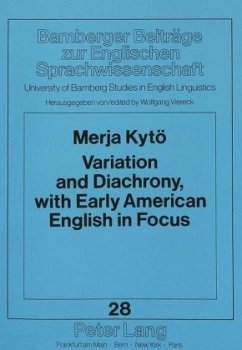This study of diachronic variation addresses two topics, the development of modal auxiliaries can (could), may (might), shall (should) and will (would), and the emergence of early American English as a new variety in the seventeenth century. Within the framework of socio-historical variation analysis, the author aims at accounting for diachronic change by examining the interplay of various linguistic and extra-linguistic factors in the light of evidence drawn from various corpora. The study concentrates on the language spoken and written in the New England area between 1620 and 1720, but to widen the scope in time and region, counterparts for comparison are found in the material included in the Helsinki Corpus of English Texts. The results indicate a gradual change (rather than a sudden re-structuring) in the system of the English modals from early stages on. Cumulative evidence is found for the rise of the forms can and will ; in early American English conservative (rather than innovative) tendencies characterize the development.

